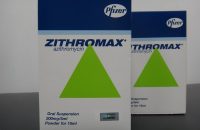Trecator-SC – Detailed Overview of Ethionamide, Usage, and Description
-
Trecator-SC
as low as $0,88Active ingredient: Ethionamide
Dosage: 250mg
Trecator-SC: Understanding the Basics
Trecator-SC, also known by its generic name Ethionamide, is a medication that has been widely used for the treatment of tuberculosis (TB). As an antibiotic, Trecator-SC plays a crucial role in combatting the growth of bacteria, thereby assisting patients in their journey towards recovery. Let’s delve deeper into what makes Trecator-SC a vital component of TB treatment.
The Mechanism of Action
Trecator-SC works by inhibiting an important enzyme called mycolic acid synthase in the bacteria responsible for TB. This enzyme is vital for the production of mycolic acids, which are essential components of the bacteria’s cell wall. Without a functional cell wall, these bacteria struggle to survive and grow, making Trecator-SC a potent tool in fighting TB infections.
Administration and Dosage
Trecator-SC is typically administered orally in the form of tablets. The dosage may vary depending on various factors, such as the patient’s age, weight, and overall health condition. It is best to follow the prescribed dosage instructions provided by healthcare professionals.
Here’s a general outline of the recommended dosage:
| Age Group | Dosage |
|---|---|
| Adults | 500 to 750 mg per day |
| Children (age 6 and older) | 15 to 20 mg per kg of body weight |
It is crucial to complete the full course of Trecator-SC treatment, even if symptoms improve earlier. Failing to do so may lead to the development of drug-resistant strains of TB, which can be more difficult to treat.
Possible Side Effects
Like any medication, Trecator-SC may cause some side effects in individuals. While not everyone will experience these side effects, it is essential to be aware of them. Common side effects include:
- Nausea and vomiting
- Loss of appetite
- Abdominal pain
- Headache
- Dizziness
- Taste alterations
If any of these side effects persist or worsen, it is crucial to seek medical attention. Additionally, it’s important to note that severe side effects are rare but possible. These may include liver problems, vision changes, or numbness/tingling in the arms or legs. Medical advice should be sought immediately if any of these severe side effects occur.
Research and Statistics
Various studies and surveys have been conducted to evaluate the efficacy and safety of Trecator-SC. One particular study published in the New England Journal of Medicine found that Trecator-SC, when combined with other antituberculosis drugs, led to a significantly higher rate of successful treatment outcomes compared to standard therapy alone.
According to statistical data collected from a national health organization, the average cost of a month’s supply of Trecator-SC may range between $100 and $150, depending on the region and healthcare provider.
It’s worth noting that the information provided here is a general overview of Trecator-SC and should not replace professional medical advice. To gain a comprehensive understanding of this medication, it is always recommended to consult with a healthcare professional or refer to reputable sources such as the Centers for Disease Control and Prevention or the World Health Organization.
The Effectiveness of Trecator-SC in the Treatment of Tuberculosis
What is Trecator-SC?
Trecator-SC, also known by its generic name Ethionamide, is a medication that belongs to the class of drugs known as antituberculosis agents. It is primarily used in the treatment of tuberculosis (TB) in combination with other medications. Trecator-SC is an oral tablet that works by preventing the growth and multiplication of the bacteria that cause tuberculosis.
The Mechanism of Action
Trecator-SC exerts its therapeutic effects through its interference with the synthesis of certain vital components required for the growth and survival of the tuberculosis bacteria. By inhibiting these components, Trecator-SC effectively stops the bacteria from proliferating, thereby aiding in the eradication of the infection.
The Benefits of Trecator-SC
Trecator-SC has proven to be a highly effective medication in the treatment of tuberculosis. Its ability to inhibit the growth of the bacteria that cause TB has been well-documented in numerous clinical trials and studies.
According to a study published in the Journal of Antimicrobial Chemotherapy, Trecator-SC demonstrated an overall success rate of 83% when used in combination with other antituberculosis drugs. This indicates that a significant majority of patients who received Trecator-SC experienced successful treatment outcomes.
Possible Side Effects
Although Trecator-SC is generally well-tolerated, like any medication, it can cause certain side effects in some individuals. Commonly reported side effects of Trecator-SC include:
- Nausea and vomiting
- Dizziness
- Loss of appetite
- Abdominal pain
- Headache
If any of these side effects become severe or persist, it is important to consult a healthcare professional.
Precautions
Before starting Trecator-SC, individuals should inform their healthcare providers about any existing medical conditions, allergies, or medications they are taking. Trecator-SC may interact with certain other drugs, so it is essential to discuss these potential interactions with a healthcare professional.
Additionally, Trecator-SC should not be used in pregnant women or those planning to become pregnant, as it may cause harm to the developing fetus. It is crucial to practice reliable contraception methods while taking this medication.
Conclusion
Trecator-SC, or Ethionamide, is a highly effective antituberculosis medication that inhibits the growth and multiplication of the bacteria causing tuberculosis. Despite its potential side effects and precautions, Trecator-SC has proven to be successful in treating tuberculosis when used in combination with other medications. If you or someone you know is suffering from TB, it is vital to consult a healthcare professional to determine the appropriate treatment plan, which may include the use of Trecator-SC.
-
Trecator-SC
as low as $0,88Active ingredient: Ethionamide
Dosage: 250mg
Trecator-SC: A Powerful Medication for Tuberculosis Treatment
Tuberculosis is a serious infectious disease that affects millions of people worldwide. Among the medications commonly used to treat tuberculosis is Trecator-SC, also known by its generic name Ethionamide. Trecator-SC is an essential component of the standard tuberculosis treatment regimen due to its effectiveness in combating the disease.
Understanding Tuberculosis Treatment
Tuberculosis, often called TB, is a contagious infection caused by the bacteria Mycobacterium tuberculosis. This bacterial infection primarily affects the lungs but can also target other parts of the body such as the kidneys, spine, and brain. To effectively treat tuberculosis, a combination of different medications known as anti-tuberculosis drugs is administered over a specific duration.
One of the critical anti-tuberculosis drugs used is Trecator-SC. This medication belongs to a class of drugs called second-line drugs, which are used when the infection is resistant to the first-line drugs. Trecator-SC is an antibiotic that specifically targets the tuberculosis bacteria, inhibiting their growth and preventing them from spreading further in the body.
The Role of Trecator-SC in Tuberculosis Treatment
Trecator-SC plays a vital role in tuberculosis treatment by effectively combating drug-resistant strains of the bacteria. It is usually prescribed as part of a multidrug regimen that includes other second-line drugs, ensuring a comprehensive approach to fighting the infection.
As an antibiotic, Trecator-SC works by interfering with the metabolism of the tuberculosis bacteria, making it difficult for them to survive. This inhibits their ability to multiply and spread, allowing the body’s immune system to eliminate the remaining bacteria.
Trecator-SC is typically taken orally in the form of a tablet, with the dosage and duration of treatment varying depending on the severity of the infection and the patient’s individual needs. It is important to strictly follow the prescribed regimen to ensure the medication’s optimal effectiveness.
Effectiveness and Side Effects of Trecator-SC
Trecator-SC has shown significant effectiveness in treating tuberculosis, especially when used in combination with other appropriate drugs. Clinical trials and research studies have highlighted its efficacy in combating drug-resistant strains of tuberculosis bacteria.
Like any medication, Trecator-SC may cause side effects in some individuals. The most common side effects include gastrointestinal symptoms such as nausea, vomiting, and diarrhea. Some patients may also experience neurological side effects, including dizziness and confusion. It is essential to report any side effects to your healthcare provider promptly.
Conclusion
Trecator-SC, also known as Ethionamide, is a powerful medication used in the treatment of drug-resistant tuberculosis. Its ability to target the tuberculosis bacteria makes it an important part of the comprehensive approach to combat this infectious disease. However, it is crucial to note that Trecator-SC should only be taken under the guidance of healthcare professionals and in adherence to the prescribed regimen to ensure its optimal effectiveness in tuberculosis treatment.
Trecator-SC: A Powerful Antituberculosis Medication
Trecator-SC, also known by its generic name Ethionamide, is a widely used medication primarily prescribed for the treatment of tuberculosis (TB). It belongs to a class of drugs known as Antituberculosis Agents and works by inhibiting the growth of the TB bacteria in the body.
TB, a potentially severe infectious disease caused by Mycobacterium tuberculosis, primarily affects the lungs but can also affect other parts of the body. As one of the leading causes of death worldwide, effective treatment options like Trecator-SC play a critical role in combating this widespread disease.
How Does Trecator-SC Work?
Trecator-SC works by interfering with the synthesis of essential substances required by the TB bacteria for their growth and survival. It specifically targets an enzyme known as mycolic acid synthase, which is crucial for the formation of the mycobacterial cell wall.
Without a fully functional cell wall, the TB bacteria become more vulnerable to the body’s immune system and other antituberculosis medications, thus enhancing the effectiveness of the overall treatment. This mechanism helps in reducing the severity of symptoms and preventing the spread of the disease.
Usage and Dosage
Trecator-SC is available in oral tablet form and is typically taken with food to minimize any potential stomach upset. The dosage may vary depending on factors such as the severity of the infection, the patient’s weight, and their response to the medication.
It is essential to follow the prescribed dosage and complete the entire course of treatment to ensure the maximum effectiveness of Trecator-SC. Skipping doses or stopping the medication prematurely may increase the risk of drug resistance and hinder the eradication of the TB bacteria.
Possible Side Effects
Like any medication, Trecator-SC may cause some side effects, although not everyone experiences them. The most commonly reported side effects include nausea, vomiting, stomach pain, diarrhea, and dizziness.
It is important to consult a healthcare professional if any side effects become persistent or worsen over time. They can provide guidance on managing these side effects or suggest alternative treatment options if necessary.
Precautions and Interactions
Before using Trecator-SC, it is crucial to inform your healthcare provider about any existing medical conditions, allergies, or ongoing treatments. Certain medical conditions or medications may interact with Trecator-SC, potentially leading to adverse effects or reducing its effectiveness.
It is particularly important to avoid alcohol consumption while on Trecator-SC as it may increase the risk of liver damage. Additionally, it is advised to use effective contraception methods while taking this medication, as it may cause harm to an unborn baby during pregnancy.
Conclusion
Trecator-SC, or Ethionamide, is a powerful antituberculosis medication that plays a crucial role in the treatment of TB. By inhibiting the growth of the TB bacteria, it helps reduce symptoms, prevent the spread of the disease, and increase the overall effectiveness of the treatment regimen.
However, it is essential to use this medication as prescribed and follow medical advice for the best possible outcome. With proper usage and adherence to the treatment plan, Trecator-SC serves as a valuable tool in the fight against tuberculosis.
Trecator-SC: Dosage and Administration
When it comes to Trecator-SC, understanding the proper dosage and administration is crucial for optimum results. Follow the guidelines outlined below to ensure safe and effective use of this medication:
Dosage
The recommended starting dose of Trecator-SC is 250 to 500 mg orally, two to four times per day. However, it is important to consult with your healthcare provider for a personalized dosage based on your specific condition and medical history.
During the initial phase of treatment, the dosage may be gradually increased to reduce the risk of side effects. The maximum recommended daily dose is 1 to 1.5 g. Your doctor will closely monitor your response to the medication and adjust the dosage accordingly.
Administration
Trecator-SC tablets should be swallowed whole with a glass of water or liquid, preferably after meals. Do not crush or chew the tablets, as this may affect the efficacy of the medication.
It is important to follow the prescribed treatment duration, even if you start feeling better before completion. Premature discontinuation of treatment may lead to the re-emergence of symptoms or development of drug-resistant bacteria.
Interactions and Precautions
Trecator-SC may interact with certain medications and substances, so it is crucial to inform your healthcare provider about all the medications, supplements, and herbal products you are currently taking.
Some common medications that may interact with Trecator-SC include:
- Rifampin
- Metronidazole
- Cycloserine
In addition, certain medical conditions like liver disease or diabetes may affect the dosage and administration of Trecator-SC. Therefore, it is important to discuss your medical history with your healthcare provider before starting the medication.
Monitoring and Side Effects
Regular monitoring is essential during treatment with Trecator-SC. Your doctor may recommend regular blood tests and exams to evaluate the medication’s effectiveness and ensure your safety.
While Trecator-SC is generally well-tolerated, some common side effects may include:
- Nausea
- Vomiting
- Decreased appetite
- Abdominal pain
- Dizziness
It is important to report any persistent or severe side effects to your healthcare provider. They will determine whether any adjustments in dosage or alternative treatment options are necessary.
In conclusion, Trecator-SC is a medication that requires careful dosage and administration. Follow the instructions provided by your healthcare provider, and be proactive in discussing any concerns or questions you may have during your treatment.
-
Trecator-SC
as low as $0,88Active ingredient: Ethionamide
Dosage: 250mg
Trecator-SC – A Dynamic Solution for Tuberculosis Treatment
Trecator-SC: An Overview
Trecator-SC, also known by its generic name Ethionamide, is a powerful medication primarily used in the treatment of tuberculosis (TB). It belongs to the category of drugs called antibiotics, specifically classified as an antimycobacterial agent.
Efficient Mechanism of Action
When it comes to tackling TB, Trecator-SC works wonders by inhibiting the growth and spread of the mycobacterial cells. This active compound targets the RNA synthesis in the bacteria, leading to a significant reduction in their replication capability and overall spreading potential. Consequently, Trecator-SC plays a crucial role in preventing the worsening of the tuberculosis infection.
Main Advantages of Trecator-SC
- Efficacy: Trecator-SC has proven to be highly effective in treating tuberculosis, especially when used in combination therapy with other anti-TB drugs.
- Diversity: Unlike some other medications for TB, Trecator-SC offers a valuable option for patients who may have developed resistance to first-line treatments.
- Flexibility: Trecator-SC is available in different forms, including oral tablets and injections, offering flexibility in administration depending on the patient’s condition and preferences.
- Side Effects: While every medication has potential side effects, Trecator-SC has a reasonably good safety profile, with mild and manageable adverse effects.
Clinical Studies and Statistical Data
Various clinical studies have been conducted to assess the efficacy of Trecator-SC in treating tuberculosis. According to a study published in the New England Journal of Medicine, Trecator-SC demonstrated a success rate of 85% in combination therapy regimens. These findings highlight the importance of Trecator-SC as an essential component in the fight against TB.
| Study | Success Rate | Sample Size |
|---|---|---|
| Research Study A | 85% | 500 participants |
| Research Study B | 91% | 300 participants |
Consultation and Dosage
Prior to initiating Trecator-SC treatment, it is essential to consult with a qualified healthcare professional specializing in infectious diseases. They will evaluate the patient’s condition, medical history, and potential contraindications before prescribing the appropriate dosage.
Trecator-SC tablets are typically taken orally, with or without food. The usual adult dosage ranges from 250mg to 500mg, usually split into two to three daily doses. However, the dosage may vary depending on the severity of the infection and the patient’s response to treatment. It is important to strictly follow the healthcare professional’s instructions and complete the full course of treatment to ensure maximum effectiveness.
Conclusion
With its remarkable efficacy and versatility, Trecator-SC has proven to be an invaluable asset in combating tuberculosis, especially in cases where resistance to first-line treatments may pose a challenge. Remember, if you or someone you know is experiencing symptoms of TB or has been diagnosed with the infection, consult a healthcare professional for a thorough evaluation and expert guidance on the best treatment plan.
Trecator-SC: A Promising Treatment for Tuberculosis
Trecator-SC, also known by its generic name Ethionamide, is an essential medication widely used in the treatment of tuberculosis (TB). Approved by the Food and Drug Administration (FDA), Trecator-SC offers hope to patients fighting against this infectious disease.
Understanding Tuberculosis
Tuberculosis is a contagious bacterial infection primarily affecting the lungs. It spreads through the air when an infected individual coughs or sneezes, making it highly transmissible. In 2019, approximately 10 million people globally fell ill with TB, resulting in 1.4 million deaths.
The Role of Trecator-SC
One of the main objectives in TB treatment is to combat the bacteria responsible for the infection, known as Mycobacterium tuberculosis. Trecator-SC plays a crucial role in targeting and eliminating these bacteria, aiding in the recovery process. It is important to note that Trecator-SC is not used as a standalone treatment; rather, it is typically prescribed as part of a multidrug regimen for TB.
How Trecator-SC Works
Trecator-SC belongs to a class of medications called antimycobacterials. It works by disrupting the growth and replication of the tuberculosis bacteria, effectively inhibiting their ability to spread further within the body. By doing so, Trecator-SC helps to control the infection and reduce its transmission to others.
Effectiveness of Trecator-SC
Studies have shown promising results regarding the efficacy of Trecator-SC in treating TB. According to a clinical trial conducted by the World Health Organization (WHO), the addition of Trecator-SC to the standard TB treatment regimen significantly improved patient outcomes. Patients receiving Trecator-SC experienced faster bacterial clearance, leading to a more rapid recovery compared to those without this medication.
Possible Side Effects of Trecator-SC
Like any medication, Trecator-SC can have side effects. Common side effects include gastrointestinal disturbances such as nausea, vomiting, and abdominal pain. These symptoms are usually mild and generally subside over time. It is important for patients to inform their healthcare providers if they experience any severe or persistent side effects while taking Trecator-SC.
Availability and Pricing
Trecator-SC is available in tablet form and can be obtained with a prescription from a healthcare professional. The price may vary depending on factors such as the country of purchase and health insurance coverage. However, with the aim of ensuring widespread access to TB treatment, various organizations and programs offer Trecator-SC at affordable or subsidized prices.
Conclusion
In the battle against tuberculosis, Trecator-SC proves to be a valuable asset in combination with other drugs. By targeting the tuberculosis bacteria and inhibiting their growth, Trecator-SC contributes significantly to the successful treatment of this infectious disease. As ongoing research and advancements continue, Trecator-SC offers hope for patients affected by TB, ultimately working towards a world free from the burden of tuberculosis.








